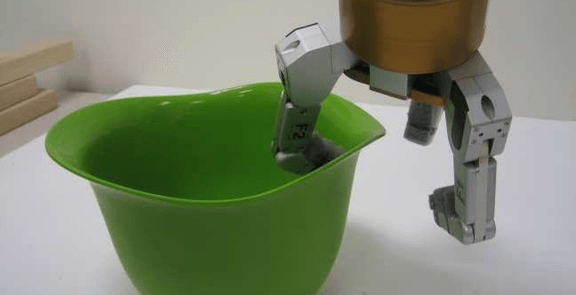A Vision-Based System for Grasping Novel Objects in Cluttered Environments

We present our vision-based system for grasping novel objects in clut- tered environments. Our system can be divided into four components: 1) decide where to grasp an object, 2) perceive obstacles, 3) plan an obstacle-free path, and 4) follow the path to grasp the object. While most prior work assumes availability of a detailed 3-d model of the environment, our system focuses on developing algorithms that are robust to uncertainty and missing data, which is the case in real-world experiments. In this paper, we test our robotic grasping system using our STAIR (STanford AI Robots) platforms on two experiments: grasping novel objects and unloading items from a dishwasher. We also illustrate these ideas in the context of having a robot fetch an object from another room in response to a verbal request.